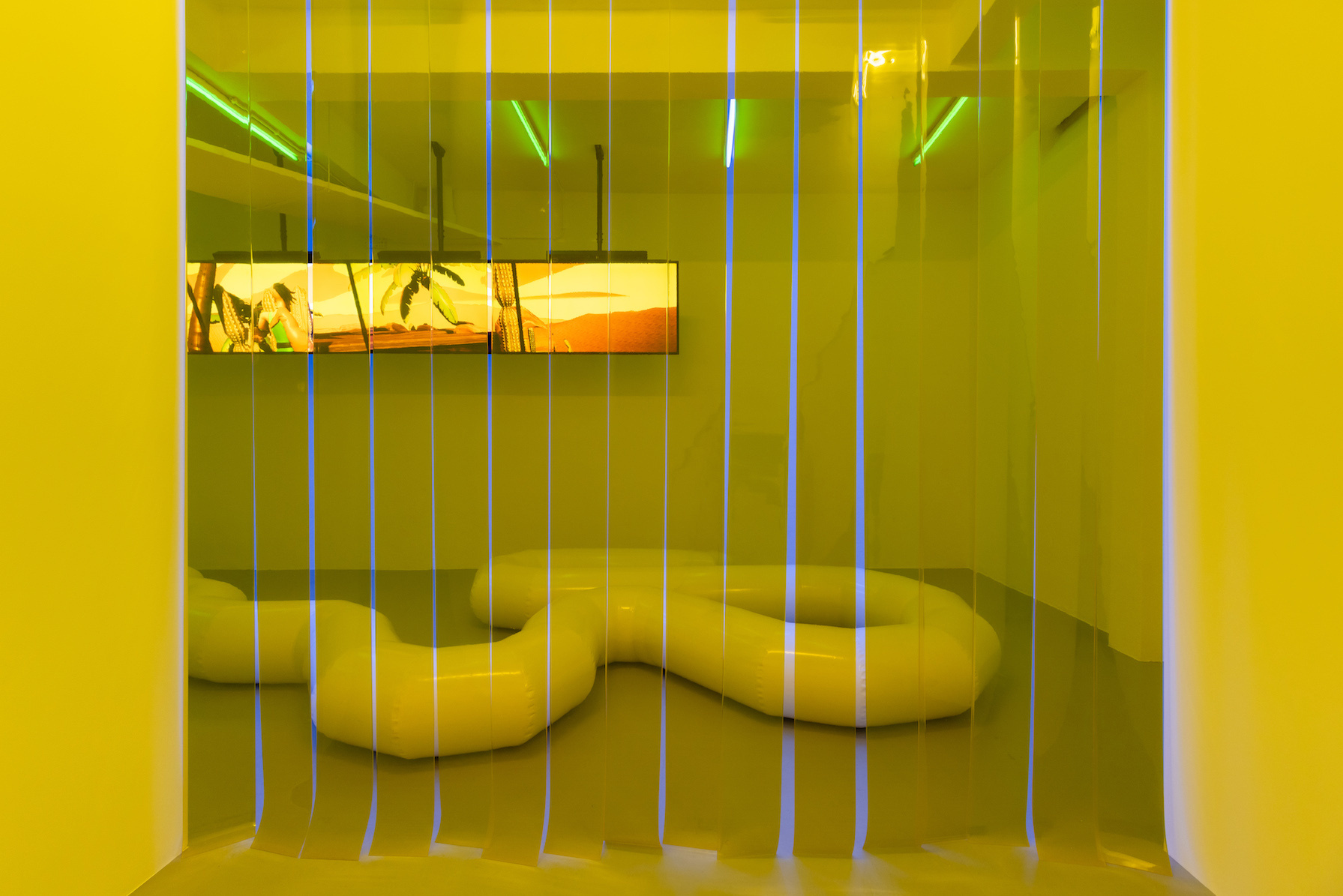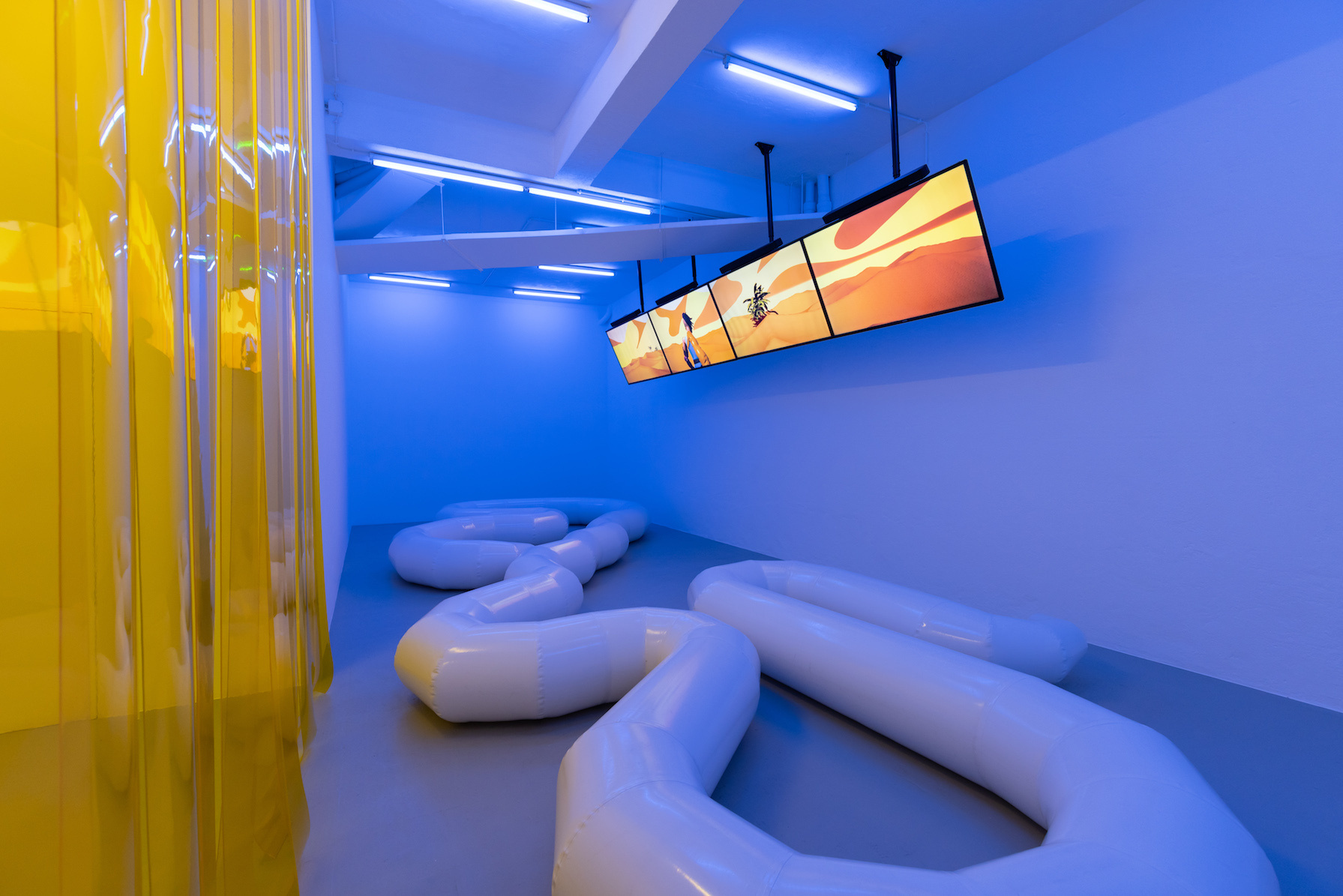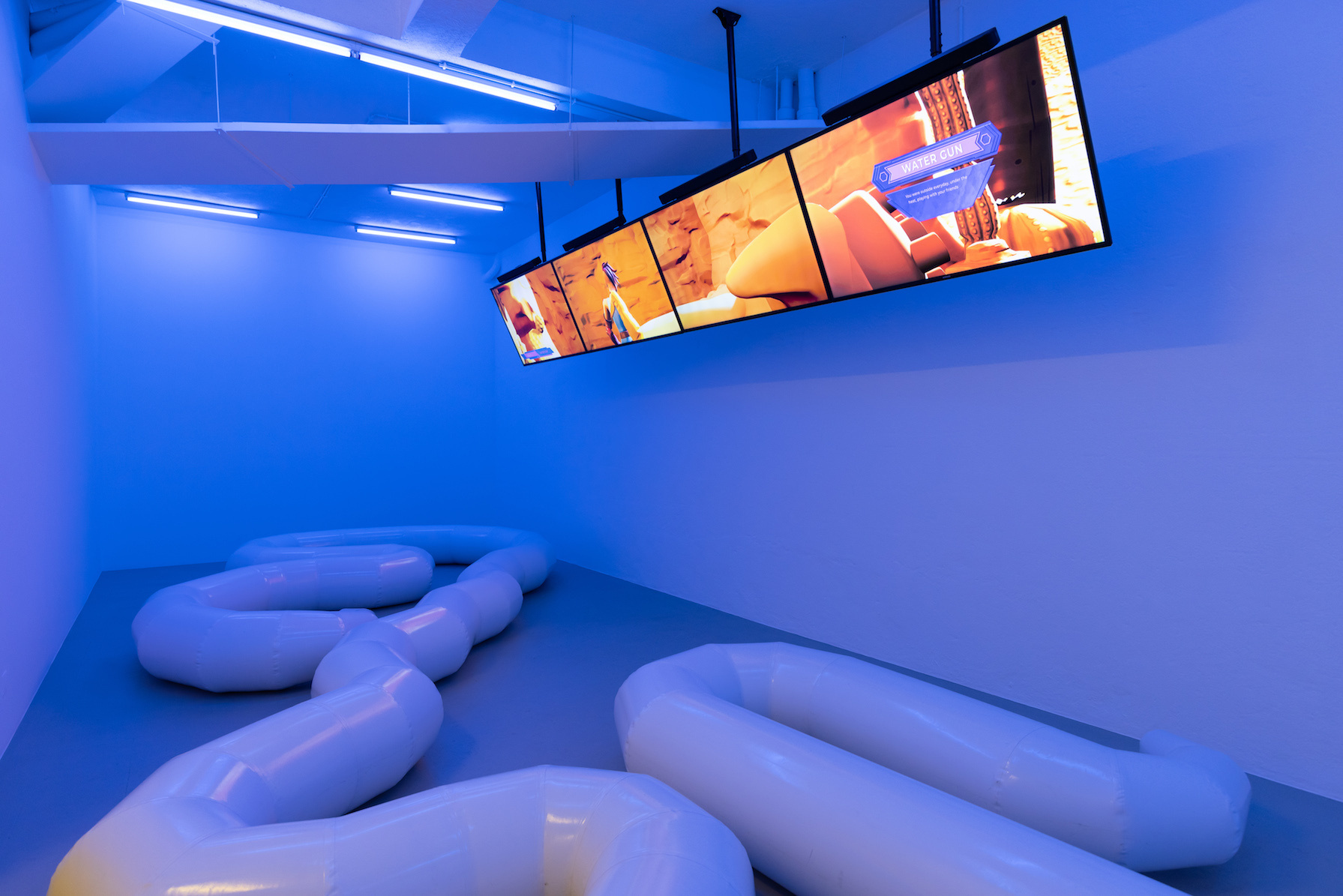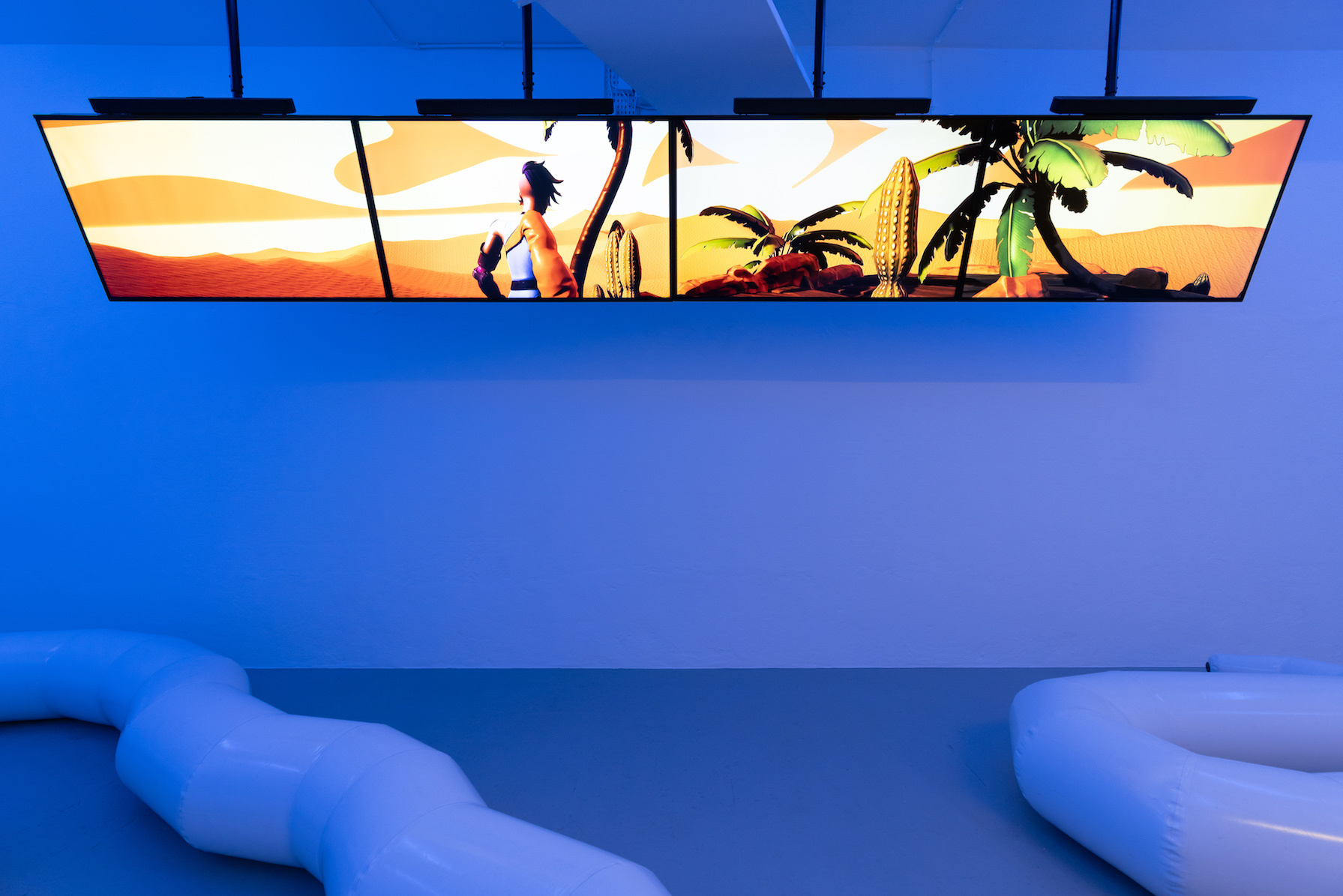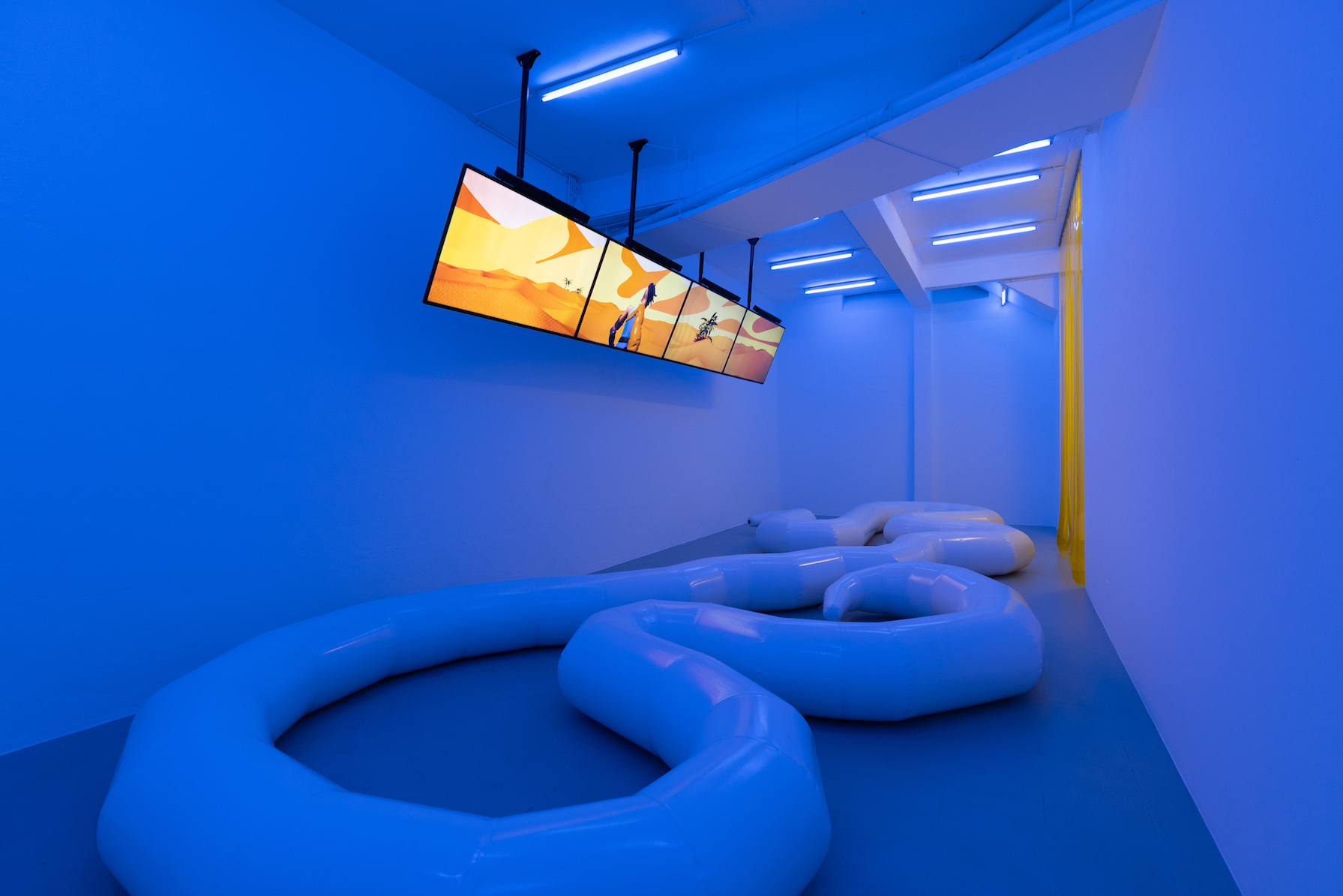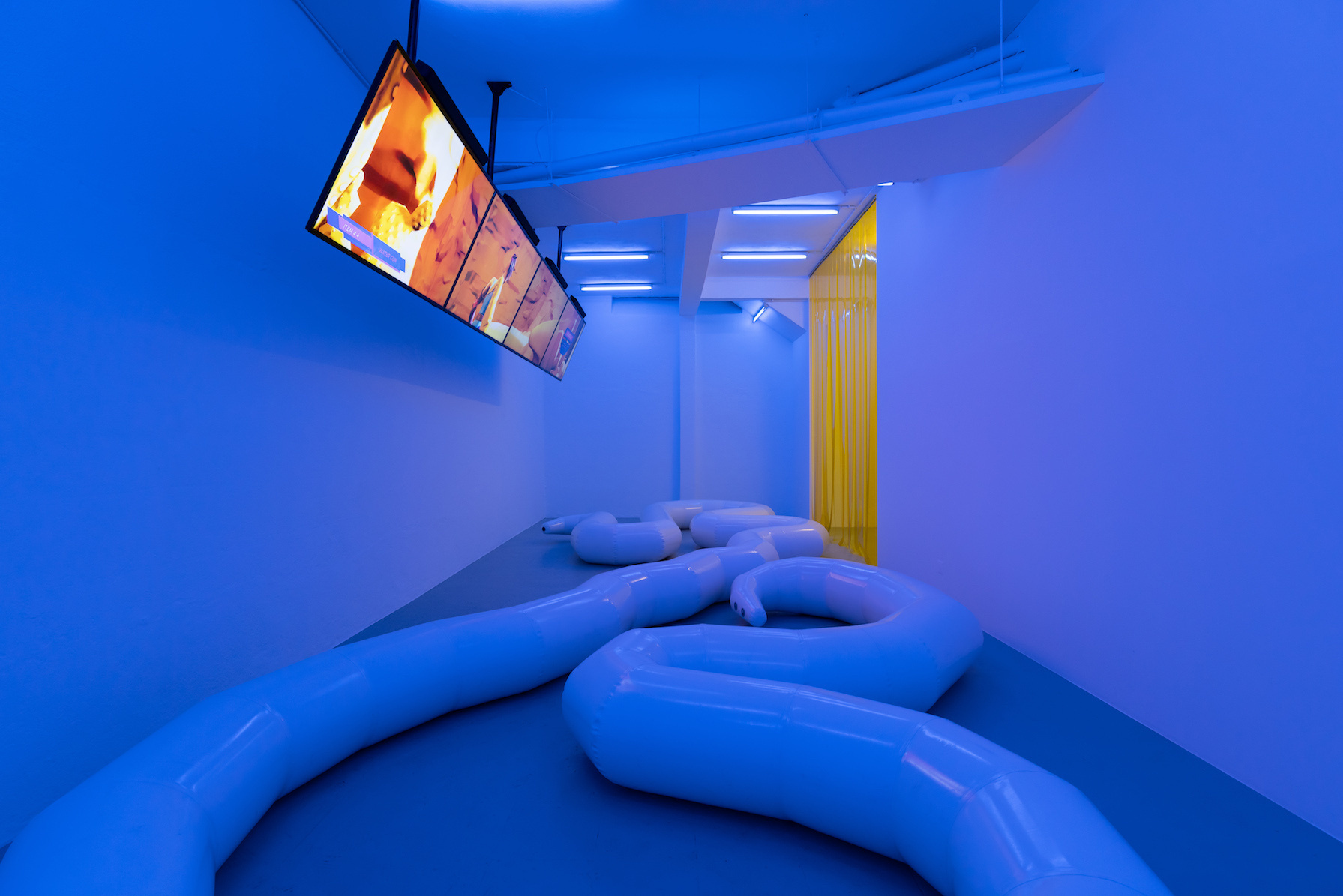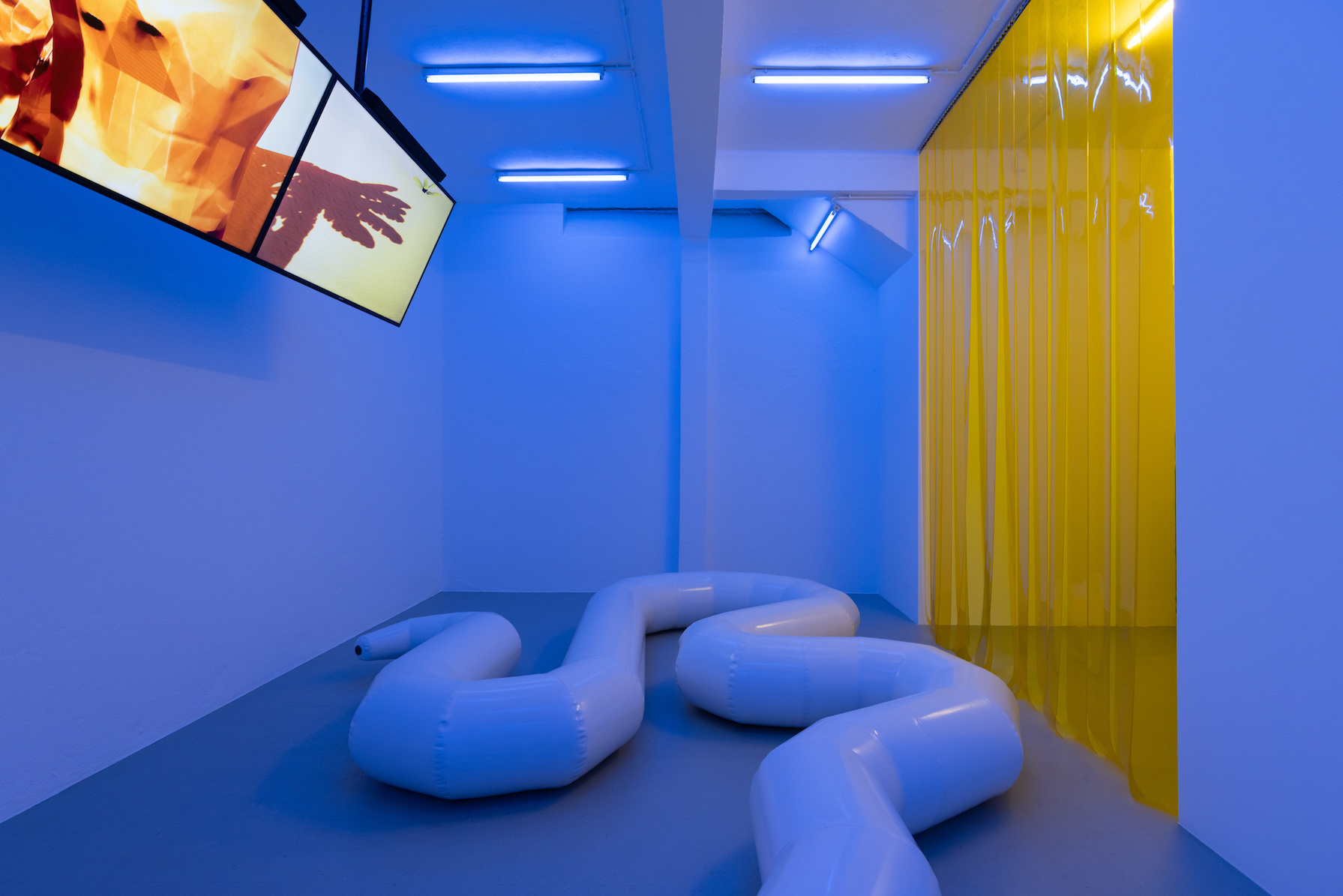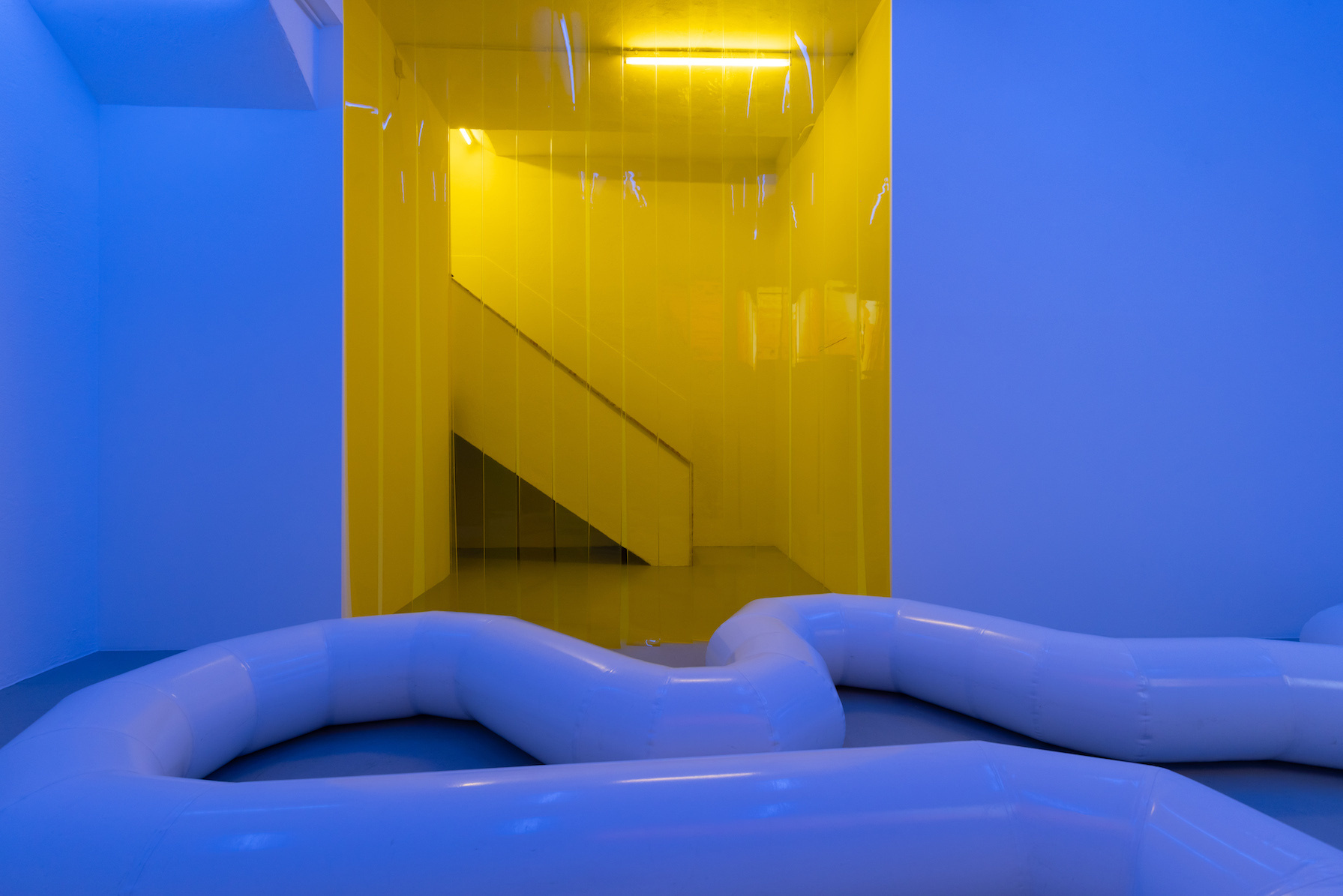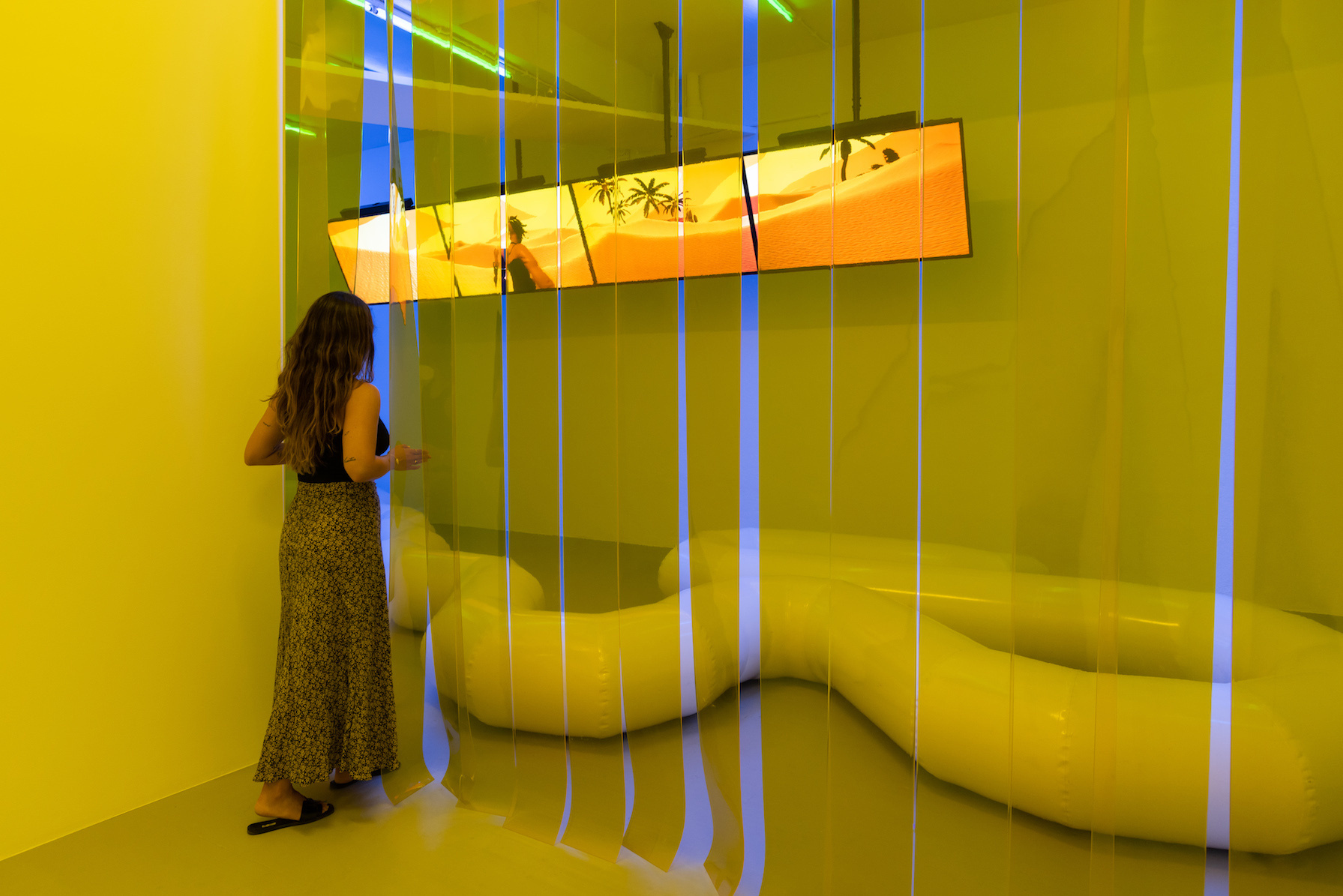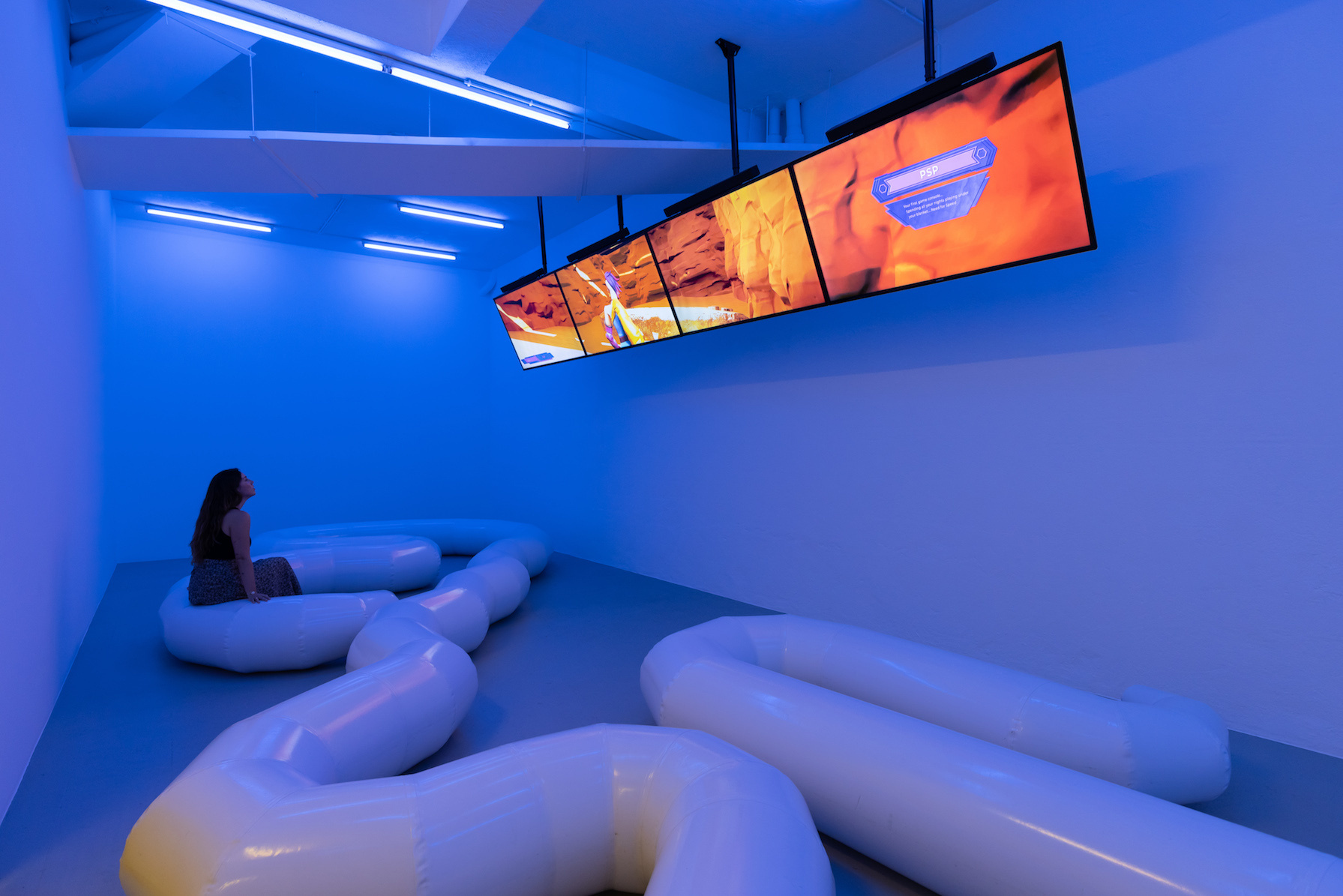Sara Sadik: Dors petit Dors
Kunsthalle Lissabon is thrilled to announce Dors petit dors, the first solo exhibition in Portugal by French artist Sara Sadik.
With the term lullaby, the memory often flies towards enchanted dream universes opened by a delicate melody but, not all lullabies are necessarily sweet, as not all dreams are pure and enchanted. They can often be shelters.
The title of the exhibition and of the video installation Dors petit dors comes from the homonymous song by the French rapper JuL, a song that takes the form of a lullaby aimed at children raised in complicated families in suburban France. “Daddy will take care of the problems, mama will take you to school” - “Even if deep down it’s arguing, mom and dad, they love each other”. These are some of the verses of the rap that try to reassure that child who, while sleeping finds refuge in a dream much more similar to one of his videogames than to a moment of his daily life.
For the exhibition conceived for the Kunsthalle Lissabon the space is divided into two parts, two colors, and two atmospheres. Crossing the yellow curtain, we enter directly into that child’s dream, a surreal dimension where the colors become darker and the atmosphere thicker. A large inflatable sculpture, where we are invited to sit, invades the space, filling it like a desire too big not to be shouted out loud.
A multi-channel video installation runs through the whole space. In the video, we see a female,
androgynous and potentially cybernetic figure wandering in a desert, apparently without direction or
goals. She is the character chosen by a young player whom we don’t know and know nothing about.
He is most likely the young man JuL references in his rap. The image that was used in the exhibition
communication provides us with additional information: in it, we see a set of toys and a portable console
on a bed. The lights are off, and the only lighting available is the one coming from the small screen,
all blues and yellows. We manage to foresee the young boy ready to escape to a world of dreams and
imagination. He logs in and is ready to start this new adventure.
While the game character seems to wander aimlessly, she finds some happy memories of her childhood and adolescence on her way, but whose childhood and adolescence? The player or the game character? The first car toy you lost the day after receiving it; your beloved teddy bear that once even went to the hospital with you; the sleeping bag that made you understand why you don’t like camping, but which still carried with it a memory that was perhaps worth keeping.
In this way, the desert becomes a metaphor for the mental space of the player who, every time that he unlocks a new item, levels up in the game, with the hope to open new scenarios and new layers of self-confidence.
Sara Sadik allows us, through a gameplay simulator, to enter one of our mysterious protagonist’s dreams, gamifying not only the memories of a young teenager but also his fears, his ambitions, and his emotions, too often considered taboos by the society in which he lives in.
The artist tells the stories, often unspoken, of young men, who struggle to freely express their feelings and who are unable to express the simplest of their desires, because forced to relegate them to their dreams. But it’s exactly in these dreams, tailor-made for them, where they can be whoever they want, regardless of gender, wear whatever they like, have a cybernetic arm, and even feel free to think nostalgically about an old toy from their childhood.
Through her computer-generated scenarios, Sadik digs into the difficult life of children who grew up in disadvantaged contexts, trying to create space and visibility for them, while investigating the construction and the performance of a certain kind of masculinity, its ethical and moral codes, and the consequences they imply on the construction of society as a whole.
Sara Sadik (1994, Bordeaux, France) lives and works in Marseille, France.
She received an MFA in Fine Arts at the Ecole des Beaux-Arts, Bordeaux, France. Her work has been exhibited internationally at venues such as Villa Medici (Rome, 2023), BasementRoma (Rome, 2023), Gladstone Gallery (New York, 2022), 16th Biennale de Lyon (Lyon, 2022), Matadero (Madrid, 2021 ), Sadie Coles HQ (London, 2021), Manifesta 13 (Marseille, 2020), Roodkapje (Rotterdam, 2018), Palais de Tokyo (Paris, 2017), Karma International (Zurich, 2017), Art Athina Fair (Athens, 2017 ), Open'er Festival (Gdynia, 2017) Occidental Temporary (Paris, 2015), among many others.
Kunsthalle Lissabon is kindly supported by República Portuguesa / DGArtes, Câmara Municipal de Lisboa, Coleção Maria and Armando Cabral. Dors petit dors was also supported by Mais França, (a program organized by the French Embassy in Portugal and the Institut Français), Trampoline, Maat Edp Foundation, and BasementRoma.

